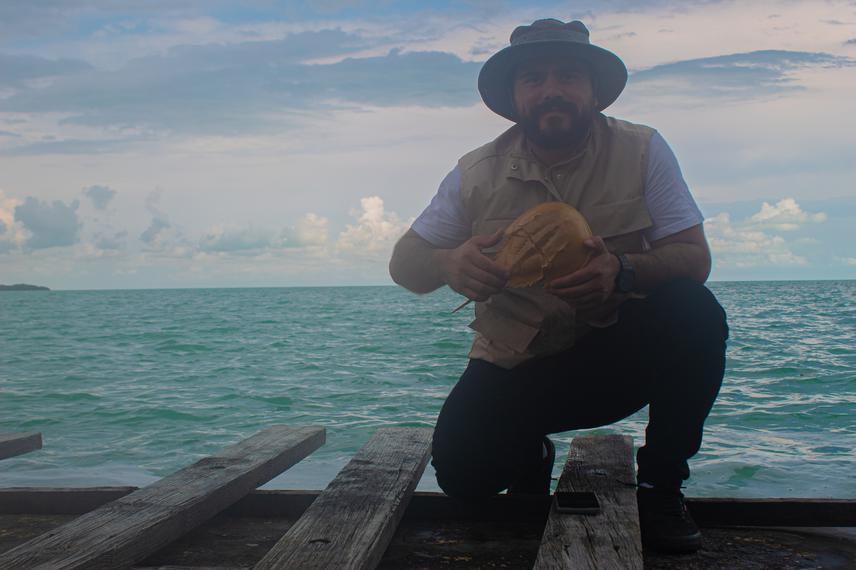Article featuring the project.
José Manuel García Enríquez
The American Horseshoe Crab (Limulus polyphemus) is a species of marine chelicerate and the only representative of the order Xiphosura in the American continent. It has a disjunct distribution along the east coast of the United States, from Maine to Louisiana, and an isolated population in the Yucatán Peninsula, Mexico. There is extensive research for this species in the United States due to its importance in the pharmaceutical industry and fisheries. However, little is known about the current status of the Mexican population, although it occupies a small region restricted to the coast of the Yucatán Peninsula and is under the highest risk category of protection in Mexican law, being classified as ‘in danger of extinction’. In this region, the main threats to this species are the modification or destruction of its habitat, pollution, illegal fishing, and the lack of knowledge. It is therefore imperative to generate knowledge about its current situation.

© José Manuel García-Enríquez.
The goals of this project are to:
(1) determine the diversity and genetic structure of the American Horseshoe Crab, through the use of molecular markers such as SSRs and the COI region of mtDNA, in its entire distribution in Mexico,
(2) analyze the global level, and GST and MT genes (involved in stress response caused by exposure to pollutants) methylation patterns in populations of the American Horseshoe Crab with contrasting degrees of pollution, and
(3) carry out environmental education campaigns in areas where the populations of this species are most at risk, aiming at different key factors such as park rangers, local communities and especially fishermen in areas where there are records of illegal fishing.
This project will generate the basis for understanding the diversity and genetic structuring of the populations of these species in its restricted distribution in Mexico. Determining the genetic structure will allow the detection of genetic populations or management units, while genetic diversity will inform us about the current genetic status of the populations. The analysis of DNA methylation patterns will generate relevant information and constitute baseline information on the impact of pollutants on American Horseshoe Crab populations. Since resources for conservation are regularly scarce, it is important to recognize the populations that are most threatened in order to direct conservation efforts toward them. This research will provide guidelines to recognize them, while working with key actors in the conservation of the American Horseshoe Crab at local scale.